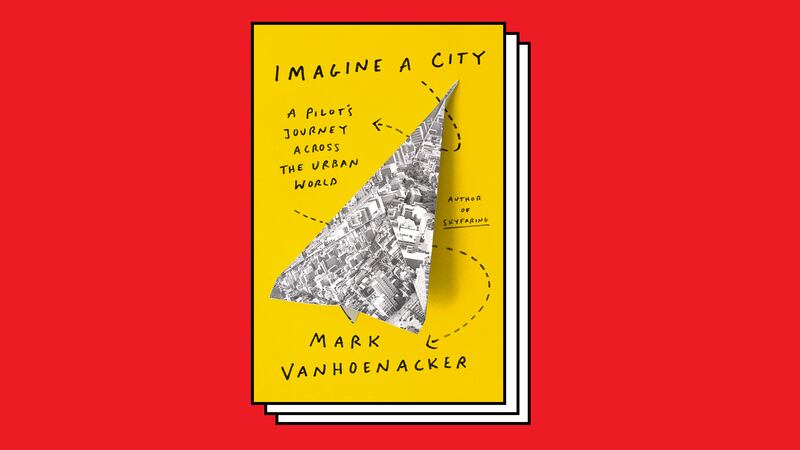To reach the cool and fragrant air of the city of Petrópolis you must leave the Atlantic Ocean and Rio de Janeiro behind and take the highway that leads north to the interior.
Rio is known from every postcard as a city of mountains. The nearby city of Petrópolis is hardly known at all outside Brazil, but every Rio-bound pilot to whom you describe the city’s location will know exactly where you mean, because the mountains around Petrópolis are higher than those of Rio and so, on aviation charts, they are shaded in more alarming patterns of colors. The poet Elizabeth Bishop, long after the last of her visits to her boyfriend in Pittsfield, lived in Petrópolis with a woman named Lota, and remarked on the “clouds floating in & out of one’s bedroom”—a pilot’s dream of a city’s air, perhaps—and when Bishop described the mountains around Petrópolis as “highly impractical,” it’s as if she was thinking first of the aviators who must carefully weave around these hills on their way down to Rio.
Reversing this journey on land, the road that leads up from the heat of Rio seems to know that no direct approach is possible, and so it makes wide arcs within the folds of the hills in order to climb to the city whose motto is Altiora semper petens, Always seeking what is higher. From a rattling bus I look across the steep valleys, these V-shaped volumes of Brazilian sky, to catch sight of farther stretches of the road we’re on, and I can’t conceive of any arrangement of curves and climbs that could possibly get us from here to there.
Finally we enter the city, through a gateway on which is written cidade imperial and petrópolis. This is the Imperial City and the City of Peter, of Pedro II (1825–1891), the last of Brazil’s emperors, who fell in love with the city’s cool, clear air and made a kind of summer capital here. Deposed after fifty-eight years, his line ended and a republic founded, the fate of Pedro II is nevertheless one that every emperor after Constantine must dream of: he is buried in a city that bears his name.
Like many pilots, I was drawn to the city by an alternative, aeronautical, royalty. Alberto Santos-Dumont, whom many Brazilians consider to be the true father of the airplane and who, in the age of pocket watches, worked with Louis Cartier to design the first wristwatch, so that he could check the time without lifting a hand from his airplane’s controls, lived here. After his death his heart, in the tradition of French kings, was removed from his body. Encased in a small golden sphere held by a winged figure, it stands in a glass box on a pedestal in a museum in Rio. Many of his other belongings are in his small home here in Petrópolis.
On this, my first trip to the city, my two colleagues and I are happy to explore the house of the great aviator, but I’ll fall in love with something else here: the Palácio de Cristal, the Crystal Palace, a greenhouse-like structure set in a small, lush park.

The Palácio, which opened in 1884, is made of simple cast iron and long, vertical panes of glass. Each of its main walls is three panes high. There’s not much else to the Palácio, though some of its panes are fronted by curlicues and each of the floor’s brown tiles is decorated with sand-colored fleurs-de-lis, and the corners of the structure are fattened with column-like adornments that echo the trunks of the trees outside.
The inspiration for the Palácio was London’s Crystal Palace; its parts were made in France and then shipped to the Brazilian highlands, where in 1884 a grand ball celebrated its assembly. On Easter Sunday of 1888, around 100 enslaved persons of Petrópolis were manumitted in the Palácio, in an imperial ceremony that foreshadowed the abolition of slavery throughout the country.
The building also served as an agricultural exhibition hall, a skating rink, and as a venue for the elegant dances of the city’s summer society. Today, the Palácio’s chandeliers—high in this stilled and delicately boxed portion of the city’s air, and so many years after the music and voices of the Brazilian court were last reflected by so many walls of glass—are bleached and bone-like in the thick tropical light, while a plaque outside describes the structure as um marco que honra os mais elevados aspectos da alma petropolitana, a landmark that honors the highest aspects of the Petropolitan soul.
The otherwise sparse design of the Palácio has an unexpected detail, one that reminds the visitor that the balls once held here did not take place in the black-and-white realm suggested by old photographs: while most of its windowpanes are of ordinary, clear glass, a few are blue.
In the Palácio, on this spring day, these panes seem to redouble the sky’s color as it falls through them, forming richly marine-hued parallelograms that fall at oblique angles on the carefully laid patterns of the tiled floor. As I walk slowly through the Palácio it feels right to step over or around these—because the color appears to be precious, perhaps, or because the eye naturally registers all such low laid blueness as water.
The Palácio is one of the most peaceful places I’ve been. This calming effect is hard to explain, since, aside from its chandeliers and a low, empty stage, it contains nothing. Perhaps it’s only that its simple iron outline acts on the city’s air like the frame of a photograph, sustaining a moment that might have been lost, though otherwise it is like any other.
Whatever the reason, as I walk away from the Palácio I look back and I know I won’t ever forget it: this quiet place where blue shapes fall from the sky, touch down, and migrate with the grace of shadows; a volume that suspends and steadies us, as if it were filled not with air, but with clear water; a palace of glass that’s open to all, though nearly everyone in Peter’s city is busy somewhere else.
Excerpted from IMAGINE A CITY by Mark Vanhoenacker. Copyright © 2022 by Mark Vanhoenacker. Excerpted by permission of Alfred A. Knopf, a division of Penguin Random House LLC. All rights reserved. No part of this excerpt may be reproduced or reprinted without permission in writing from the publisher.






